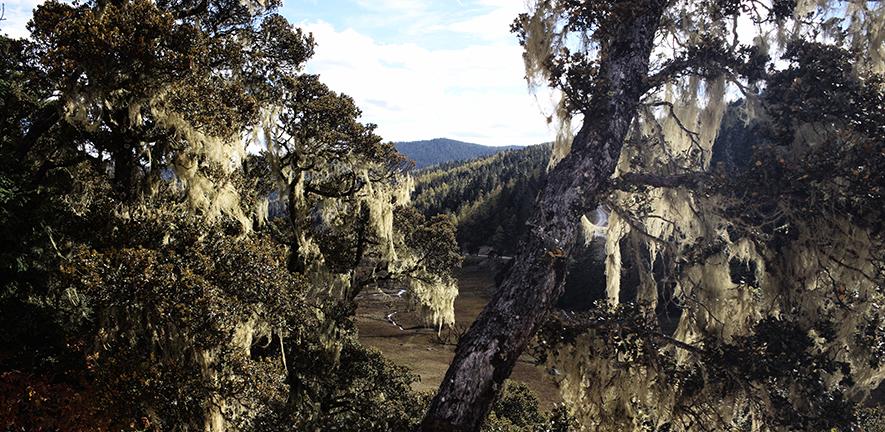

Forest habitat in Yunnan province. Photo credit: Cambridge University
Climate change may have driven the emergence of Covid-19 (SARS-CoV-2), according to a new international study led by researchers from Cambridge University in the UK.
Global greenhouse gas emissions over the last century have made southern China a hotspot for bat-borne coronaviruses by driving growth of forest habitat favoured by bats, they say.
The study published, in the journal Science of the Total Environment, provides the first evidence of a mechanism by which climate change could have played a direct role in the emergence of SARS-CoV-2, the virus that caused the Covid-19 pandemic.
The research has revealed large-scale changes in the type of vegetation in the southern Chinese Yunnan province, as well as adjacent regions in Myanmar and Laos over the last century.
Climatic changes including increases in temperature, sunlight and atmospheric carbon dioxide – which affect the growth of plants and trees – have changed natural habitats from tropical shrubland to tropical savannah and deciduous woodland. This created a suitable environment for many bat species that predominantly live in forests.
The number of coronaviruses in an area is closely linked to the number of different bat species present.
The study found that an additional 40 bat species have moved into the southern Chinese Yunnan province in the past century, harbouring around 100 more types of bat-borne coronavirus. This ‘global hotspot’ is the region where genetic data suggests SARS-CoV-2 may have arisen.
“Climate change over the last century has made the habitat in the southern Chinese Yunnan province suitable for more bat species,” said Dr Robert Beyer, a researcher in the University of Cambridge’s Department of Zoology and first author of the study.
“Understanding how the global distribution of bat species has shifted as a result of climate change may be an important step in reconstructing the origin of the Covid-19 outbreak.”
He added: “As climate change altered habitats, species left some areas and moved into others – taking their viruses with them. This not only altered the regions where viruses are present, but most likely allowed for new interactions between animals and viruses, causing more harmful viruses to be transmitted or evolve.”
The world’s bat population carries around 3,000 different types of coronavirus, with each bat species harbouring an average of 2.7 coronaviruses – most without showing symptoms.
An increase in the number of bat species in a particular region, driven by climate change, may increase the likelihood that a coronavirus harmful to humans is present, transmitted, or evolves there.
The region identified by the study as a hotspot for a climate-driven increase in bat species richness is also home to pangolins, which are suggested to have acted as intermediate hosts to SARS-CoV-2. The virus is likely to have jumped from bats to these animals, which were then sold at a wildlife market in Wuhan – where the initial human outbreak occurred.
The researchers echo calls from previous studies that urge policy-makers to acknowledge the role of climate change in outbreaks of viral diseases, and to address climate change as part of Covid-19 economic recovery programmes.